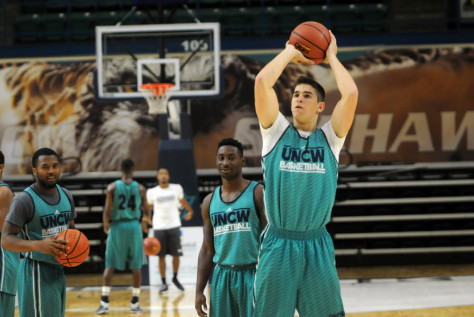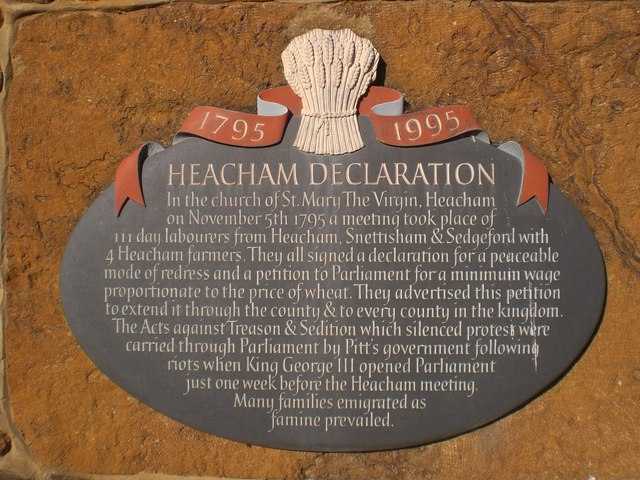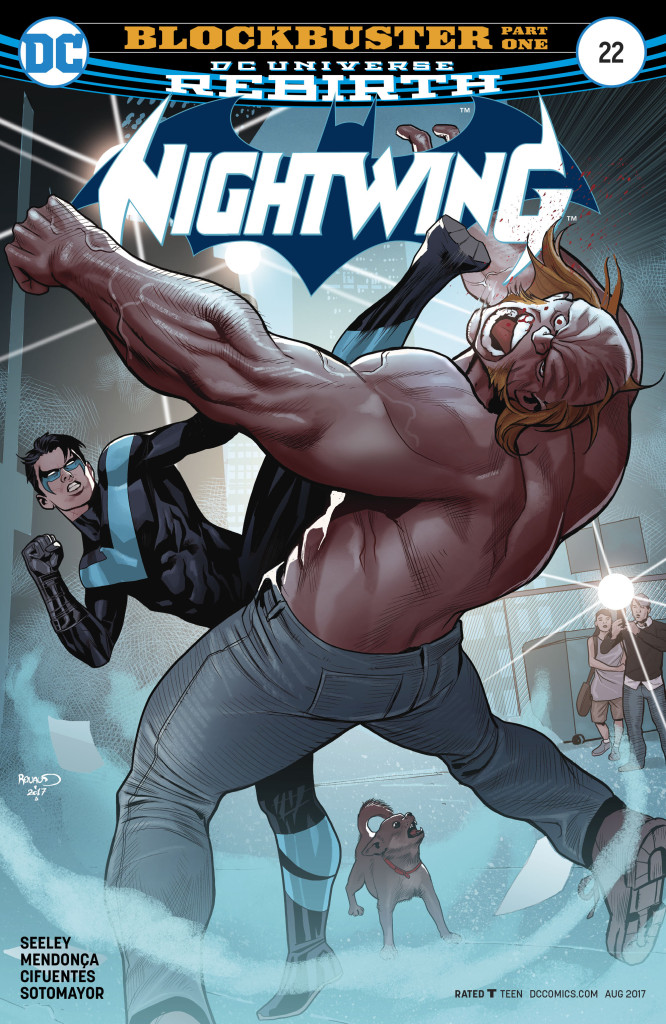Yesterday I took a walk through British Art at the Tate Britain in London. This walk starts with the 16th C. and continues up to the 1960s. In the room for the 18th C. I came across a wonderful painting. It is one thing to see a famous painting on a post card or in a magazine but to see it in person, right there in front of you, is something entirely different. I stood before George Stubbs “Mares and Foals in a River Landscape” painted 1763-8, for several minutes. Stubbs was the premier animal painter of his day. Horses were his specialty and he was known to have examined horse cadavers in detail to learn about the muscle structure and bones beneath the surface. 
Moving on to the 19th C. room I found a very interesting painting by James Ward done in 1831. Titled “The Moment” it depicts a white horse being threatened by a huge snake. Ward was known for allegorical paintings and the white horse is thought to be Adonis, the horse of George III ,and representing the power of the Monarchy threatened by the government (the snake) with the passing of the Great Reform Bill in 1832.

In the 20th C room I found an interesting painting by Robert Bevan called the “Cab Horse” (1910). This painting was done for the first Camden Town Exhibition and shows a cab horse having a blanket put onto his back. The critics at the time made much of the vibrant colors in the painting, especially the purplish blue of the horse. This was the style of the post impressionists and was found in the work of many of the Camden painters of the time.
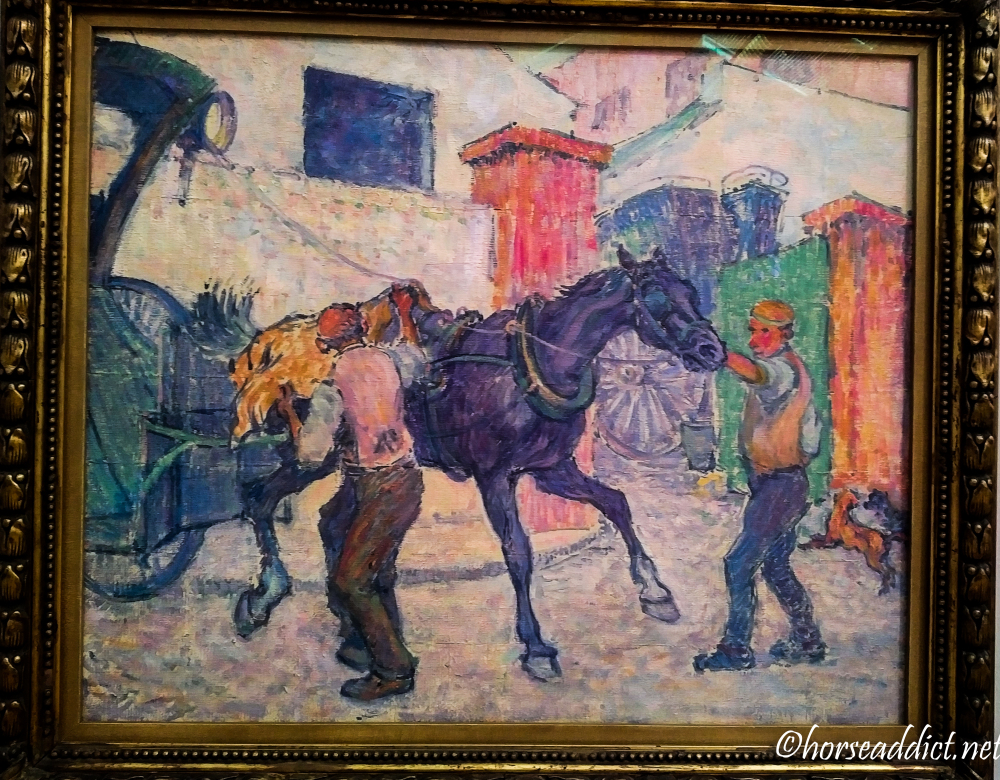
Then I came to the 1910 room and found the painting that had inspired me to come to the Tate. The Merry Go Round.
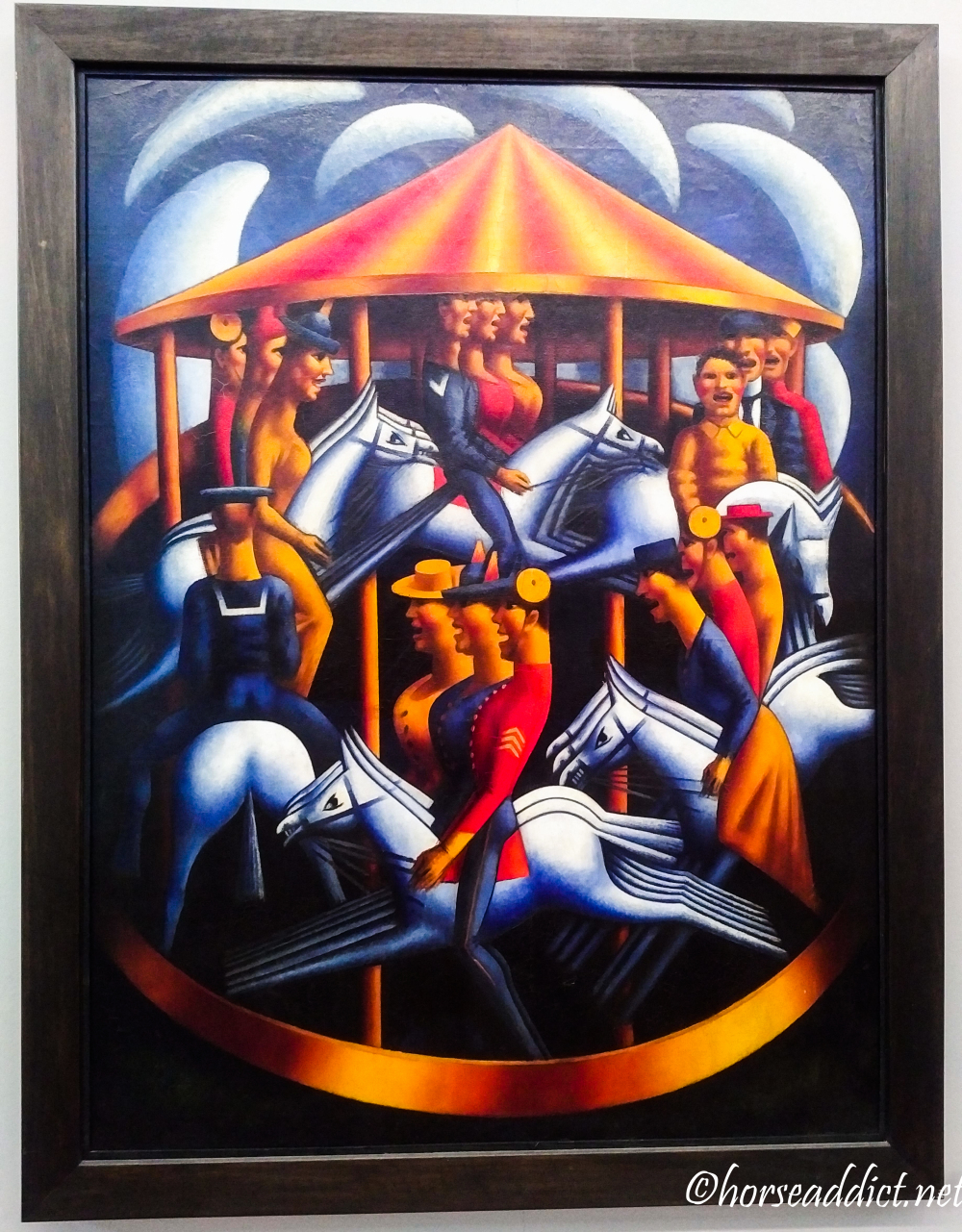
This painting by Mark Gertler was done in 1916 during World War 1. Gertler was a pacifist and a conscientious objector to the war. He lived near Hampstead Heath and may have attended the fairs there that were held there for the wounded soldiers. The Merry Go Round that he depicts is one of horror not fun. Any thoughts of fun or frivolity are quickly punctured. The mouths of the people are in horrific grimaces.

Some are dressed in military uniform.

Even the horses are shown with their teeth barred.
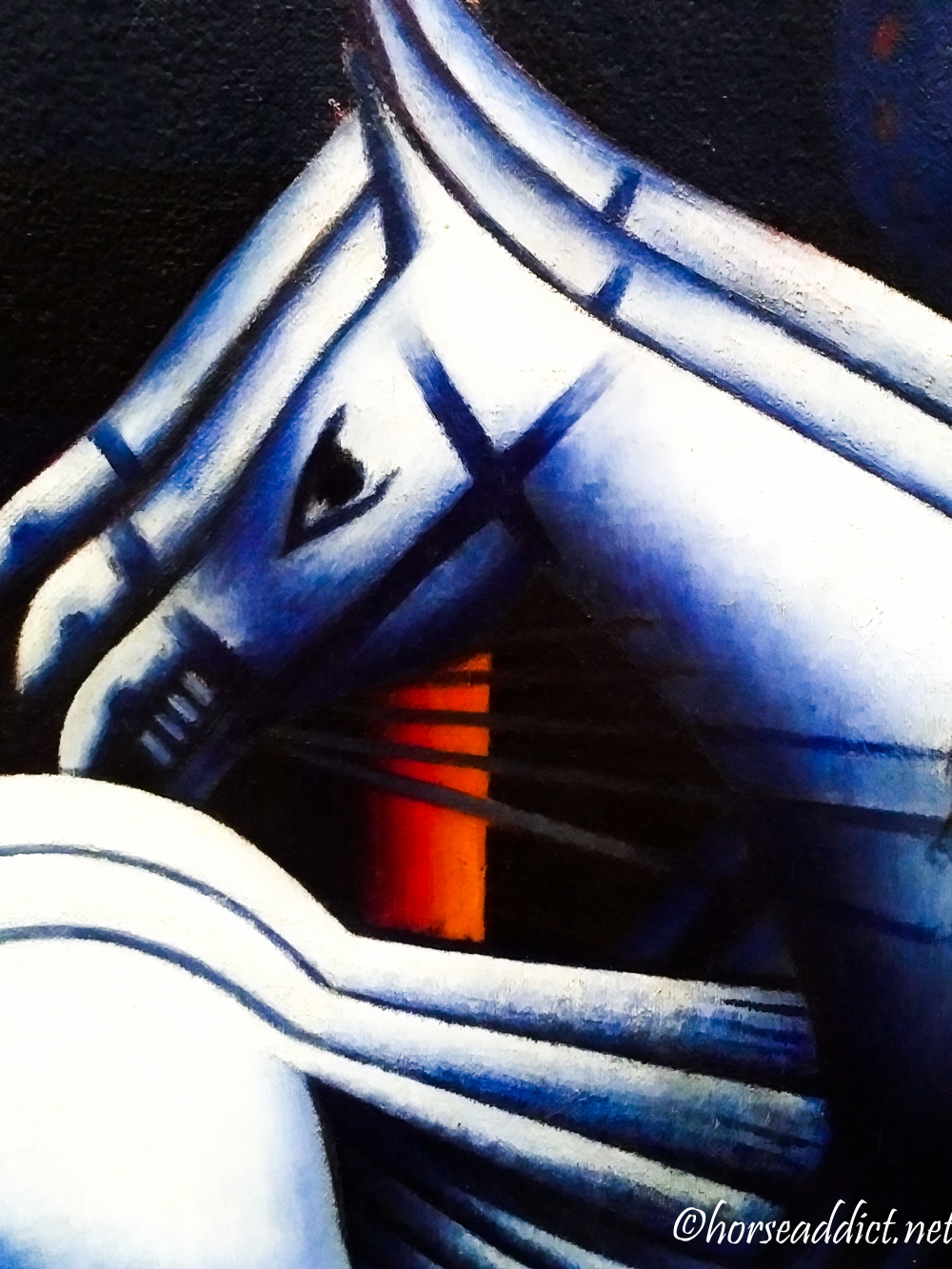
Gertler intended this painting to be a metaphor for the relentless military machine. The Merry Go Round is not even round it has an Escher like distortion of the perspective which adds to the discomfort when viewing this very moving piece. Gertler himself said: “Lately the whole horror of war has come freshly upon me.”
His painting still makes a very strong statement today.
All the photos in this post were taken in the Tate with my Blackberry phone and edited in Lightroom.
Share this:
